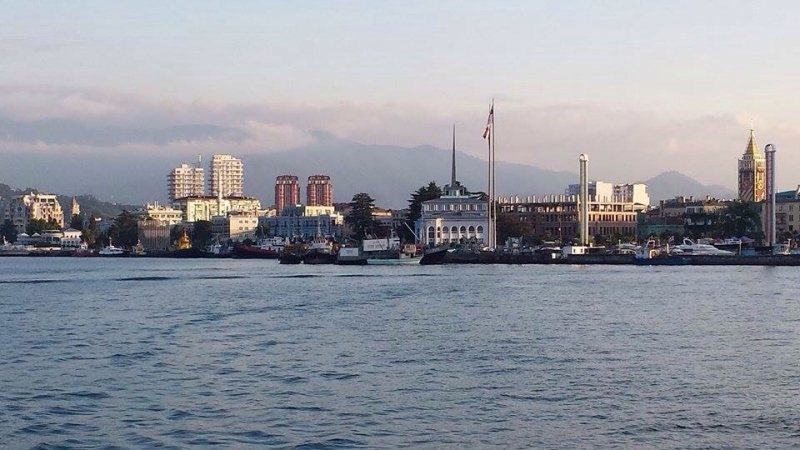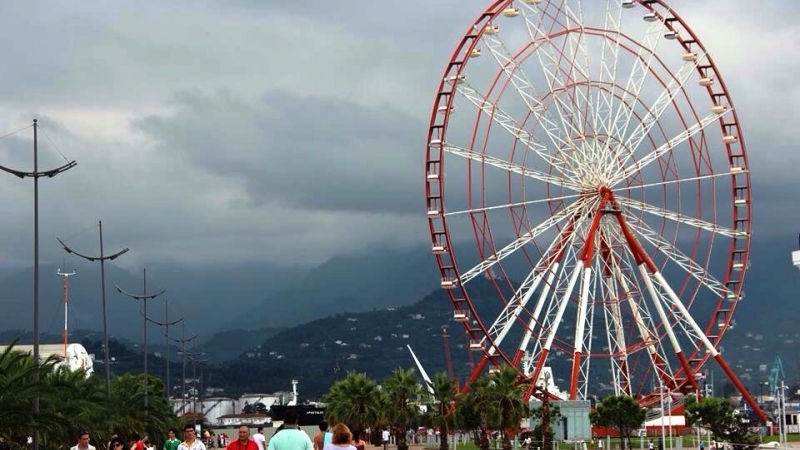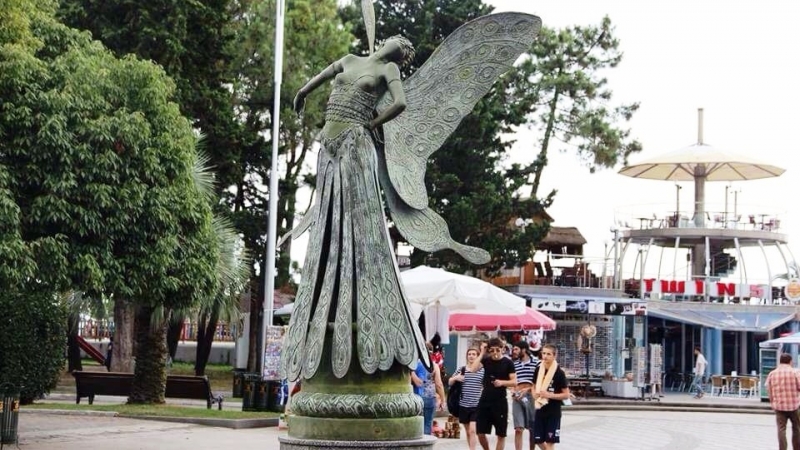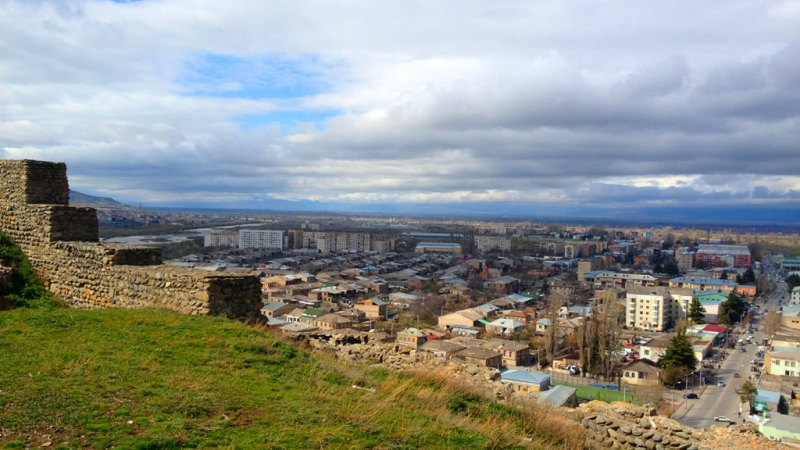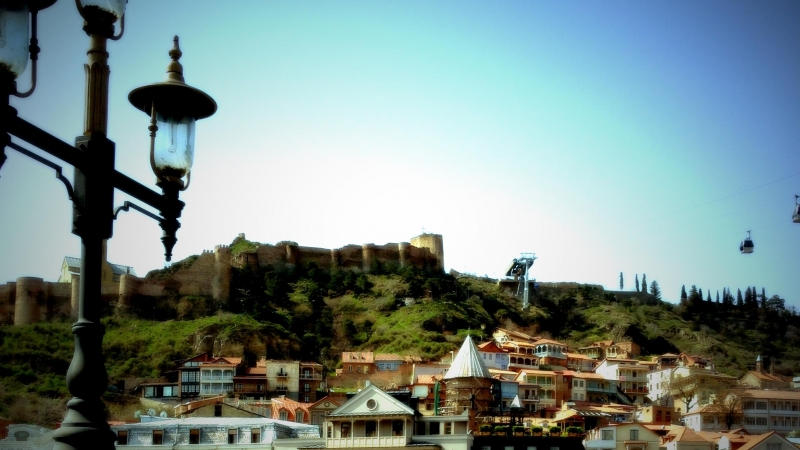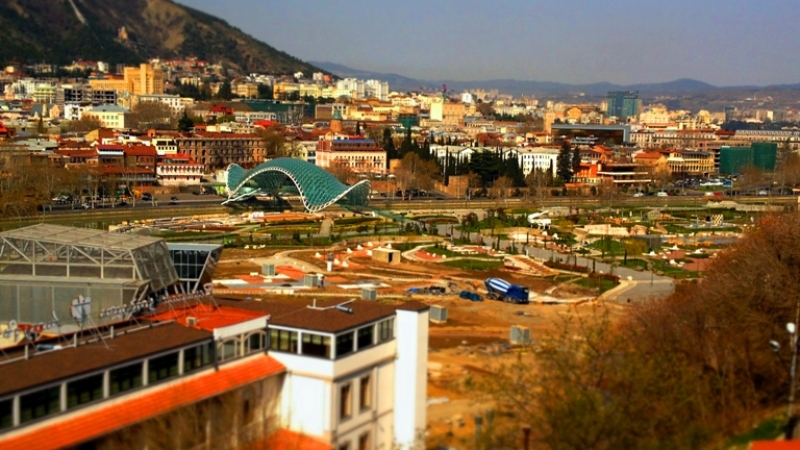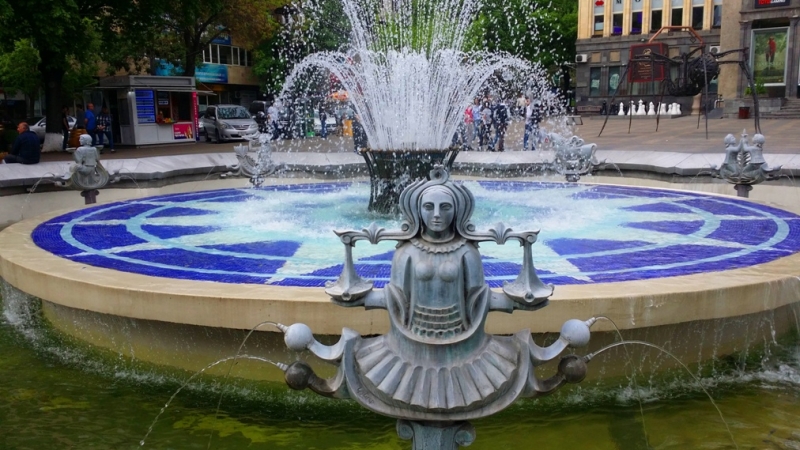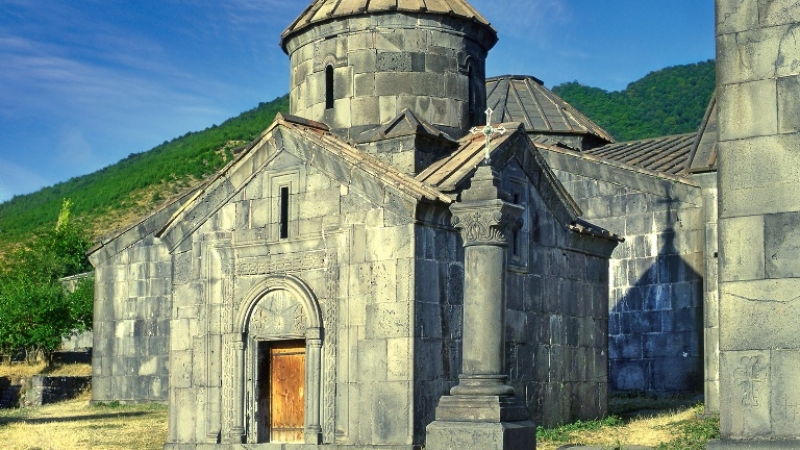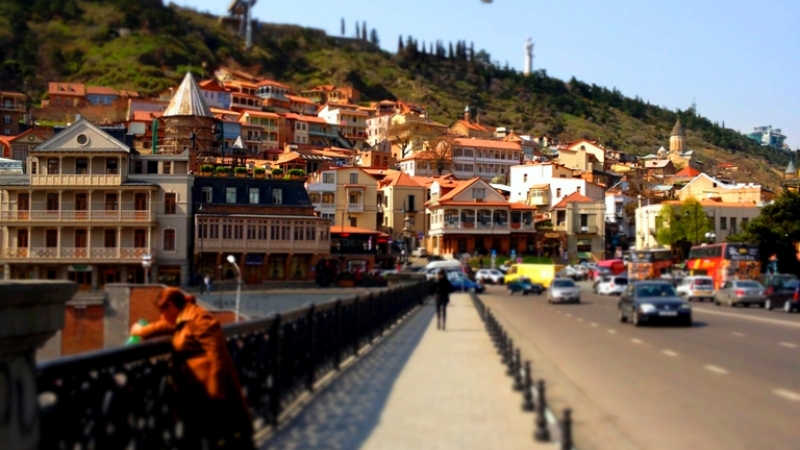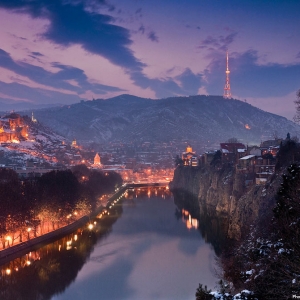
Georgia-Armenia
12 days / 11 nights
arrival in Kutaisi / departure from Kutaisi
Arrival in Kutaisi. Meeting at Kutaisi Airport. Drive to Batumi, a seaside city on the Black Sea coast in southwest Georgia. Tour around Batumi. Batumi’s seaside park is very famous for its number of species and unique plants. It stretches along the seashore to the north-west of Batumi like a green line. In the evenings spectacular show of dancing fountains attracts a lot of tourists and locals. Overnight in Batumi.
Breakfast at the hotel. Visit Batumi Botanical Garden that has no analogue in the world in terms of co-existence of different climatic and landscape zones endemic plants. The Garden contains thousands of plant species of astonishing beauty. Visit Gonio Fortress located 12 km south of Batumi on the left bank of the River Chorokhi. It is a real paradise for lovers of historical and cultural antiquities. Historically, Gonio-Apsaros Fortress had a unique strategic importance: it protected the entrance to the Chorokhi and Acharistskali gorges, which connected the south western inlands to the Black Sea littoral. This important location made Gonio Fortress one of the citadels of both the Roman and later Byzantine Empires. Overnight in Batumi.
Breakfast at the hotel. Drive to Gori. Visit Joseph Stalin State Museum. Drive to Mtskheta, one of the oldest cities of Georgia, the capital of the early Georgian kingdom of Iberia during the 3rd century BC - 5th century AD and site of early Christianity. Visit Svetitskhoveli Cathedral (11th century) and Jvari Monastery (6th century). Overnight in Tbilisi.
Breakfast at the hotel. Tbilisi (literally "Warm Spring") is the capital and the largest city of Georgia, lying on the banks of the Mt'k'vari River, founded in the 5th century by Vakhtang Gorgasali. Tbilisi is a significant industrial, social and cultural centre of Georgia. Located strategically at the crossroads between Europe and Asia and lying along the historic Silk Road routes, Tbilisi has often been a point of contention between various rival powers and empires. The history of the city can be seen by its architecture. Tbilisi sightseeing tour includes: Old town: Metechi church and the statue of king Vakhtang Gorgasali (founder of Tbilisi -5th century); Abanotubani, the ancient district of Tbilisi, known for its sulfuric baths; Narikala fortress; Sharden street, Synagogue, Sioni Cathedral, The Holy Trinity Cathedral, known as Sameba, which is the main Georgian Orthodox Cathedral listed among the largest Orthodox churches in the world; Shota Rustaveli Avenue; Open Air Museum of Ethnography – it is essentially a historic village populated by buildings moved there from all main territorial subdivisions of Georgia. Overnight in Tbilisi.
Breakfast at the hotel. Drive to the Georgian - Armenian border Sadakhlo. Passing border formalities Drive to Haghartsin Monastery located in the secluded place of the forest, which includes the group of Monastery buildings. Appearing unexpectedly, out of the dense forests, in front of the visitors, the Monastery creates a magical impression of the lost world. Drive to Lake Sevan, one of the wonders in Armenia. This blue lake is one of the greatest high mountainous freshwater lakes of Eurasia. On a clear and sunny day, the water is often of a deep turquoise colour. Total surface of the lake is 940 km2. Akhtamar peninsula is most popular destination to enjoy the breath-taking view on Sevan Lake, make pics for sweet memories and visit the ancient Sevanavank Monastery (IX century), which stands in its greatness on the peninsula overlooking the lake for centuries. Drive to Yerevan. Overnight in Yerevan
Breakfast at the hotel. City tour- Yerevan sightseeing including City center, Republic square, State University, City panorama, Mother Armenia Monument, Parliament, President’s Palace, Opera, Sports & Concert Complex. Visit to the Genocide Memorial, dedicated to the Victims of 1915 and the Genocide Museum. Visit to Matenadaran (depository for ancient manuscripts, the collection of which is one of the biggest in the world). This outstanding collection includes manuscripts dating from 7th century and is widely appreciated by history and art amateurs and professionals. Visit to Cascade complex, which is considered the modern art center of Yerevan, with art pieces displayed throughout the whole area: the boulevard and up the stairs, from top of which you can enjoy the panoramic view on the city and Mountain Ararat. Cascade is home to Cafesjan modern art museum. This place becomes even more charming in the evenings, when it is full of people, both locals and tourists from all over the world, enjoying the magic and the warmth of the capital. You will enjoy spending time in one of the cozy open-air cafes surrounded by beautiful sculptures, redolent flowers shining brightly with magic colors. It is also a popular place for open air concerts at summer season. Option: Very interesting one hour tour around Armenian brandy factory offers tourists familiarization with the history of the plant, process of brandy preparation, showrooms and halls of storages. Visitors will also have degustation of 2 types of brandy of different age in degustation hall. Brandy shop at the factory territory will be available for purchasing of this famous Armenian brandy directly from the factory. Overnight in Yerevan
Breakfast at the hotel. Drive to Ararat valley, visit Khor Virap church, the holy place of imprisonment of St. Gregory the Illuminator accused by Armenian king of preaching Christianity. It was built on the dungeon, where St. Gregory was kept. Now you have a chance to go down into the dark pit yourself. St. Gregory became one of the Saints of the whole Christian world. Here you can also see the closest and most spectacular view of the gorgeous biblical mountain Ararat shining with its two white peaks. The hills adjoining Khor Virap were the site of the early Armenian capital of ancient Artashat built by King Artashes I, founder of the Artashesid dynasty, around 180 B.C. It is one of the few ancient towns, built by special design of famous Carthaginian general Hannibal. After the defeat in a war against Rome he found a shelter in Armenia… Drive to Noravank Monastery complex (XIII- XIV cc.), a major religious and cultural center, closely connected with Gladzor’s famed university and library.The most ancient monument of Noravank is St. Karapet Church (IX - X cc.). The burial site of the Orbelian dynasty (XIII - XIV cc.) is located north to the main temple. Тhe Church decorations include: Mother of God, the Father, crucifixion of Christ, as well as number of engraved stonecrosses. Drive to Areni village, famous for its wine making. Recent archaeological excavations found 6000 years winery with 5 wine cellars. Within the underground wine cellar, archaeologists discovered a wine press for stomping grapes, fermentation and storage containers, drinking cups, grape vines, skins, and seeds. Archaeologists suggest that our early ancestors used wine in ceremonies to honour the dead. It is also thought as a gift, placed and consumed inside the tombs. Tour around Areni wine factory with wine degustation will be a nice stop on the way to relax. Drive to Yerevan. Overnight in Yerevan
Breakfast at the hotel. Drive to the only remaining pagan temple in Armenia devoted to the God of Sun – Myrth, in Garni, built in 77 AD by King Trdat (Arshakid Dynasty). Photo stop at Charentc Arc. The temple is Greco-Roman style with characteristic pillars. It stands proudly on a rocky ridge with a deep canyon presenting a beautiful view. The temple was a summer residence for Arshakid dynasty. Visit to the ruins of Royal Palace and Royal bath-house nearby. Canyon of Garni -magnificent and outstanding scene which creates the image of falling crags. It obtained the name "Symphony of Stones" due to its view. The fantastic landscape of Garni canyon shakes the human imagination. Drive to the unique caved temple St. Geghard (12th -13th cc.), the name of which means “holy spear” in the honor of the long-preserved spear, the same spear that pierced the body of crucified Christ. It is now exhibited in the museum of Etchmiadzin Cathedral. Geghard Monastery is included in the UNESCO World Heritage list (2000). Optional: Family hosted lunch in village house with watching of “Lavash” (Armenian traditional flat bread baked in stone-make oven) making process, testing authentic Armenian food, get acquainted with local village life. Degustation of homemade vodka made from different fruits (apricot, grape, pitch, apple or mulberry) and homemade wine. Drive back to Yerevan. Overnight in Yerevan.
Monastery. Sanahin Monastery ranks amongst the most celebrated monasteries of medieval Armenia. It is a complex with St. Mother of God Church, St. Amenaprkich Church, St. Gregory chapel (X c.), an Academy building (XI c.), a depository (XI c.), a Gallery building (X c.), a vestibule (XII c.) and bells (XIII c.). All these buildings are around St. Blessed Virgin old Church. Haghpat monastery is located in the north-eastern part of Sanahin, was built with its resemblance. The clock-tower was erected in 1210 and is one of the most beautiful examples of its kind from the medieval period in Armenia. The monastery’s bell tower, built in 1245, stands apart from the main ensemble of monuments, and is architecturally noteworthy. The complex was once home to libraries, scriptoriums, schools and refectories. Arts and humanities, theology, painting were taught here. The most interesting feature about Haghpat is the refectory (XIII c.). Haghpat and Sanahin Monasteries are included in the UNESCO World Heritage List (2000). Drive to the Georgian - Armenian border – Sadakhlo. Passing the border formalities. Drive to Tbilisi. Overnight in Tbilisi.
Breakfast at the hotel. Drive to eastern part of Georgia Kakheti region, known almost exclusively for its vineyards and wineries. Visit Signagi, ancient city, also known as the City of Love, with stone-paved streets and the balconies in old - Georgian style. It is one of the beautiful towns of Kakheti region At the elevation of about 790 m above sea level, the town overlooks the Alazani valley and faces the Greater Caucasus Mountains. The town is walled with the remnants of 18th century fortifications. Visit Bodbe Monastery Originally built in the 9th century, it has been significantly remodeled in the 17th century. The monastery now functions as a nunnery and is one of the the major pilgrimage sites in Georgia. Drive to Velistsikhe, village in Kakheti region. Visit peasant house with wine cellar. Optional: Diner in the yard of house with barbeque (shashlik) on nature, wine tasing in the wine cellar. Drive back to Tbilisi. Overnight inTbilisi.
Breakfast at the hotel. Drive to Uplistsikhe (literally, “the lord's fortress”), the ancient rock-hewn in eastern Georgia. It contains various structures dating from the Early Iron Ages to the Late Middle Ages, and is notable for the unique combination of various styles of rock-cut cultures from Anatolia and Iran as well as the co-existence of pagan and Christian architecture. Drive to Kutaisi, the second largest city of Georgia. Tour round Kutaisi. Visit to Gelati Academy and Monastery, a monastic complex near Kutaisi, the region of Imereti, western Georgia, was founded by King David IV the founder in XII century. During the 12-13th centuries Gelati was one of the biggest religious, educational, scientific centers of Georgia. The founding of Gelati is tied to the cultural renaissance of Georgia. Drive to Bagrati Cathedral ,built in the early years of the 11th century, during the reign of King Bagrat III due to which it was called "Bagrati" Cathedral, i.e., Bagrat’s cathedral. In 1994, the Bagrati Cathedral, together with the Gelaty Monastery, was included in the UNESCO World heritage Site list as a single entity. Overnight in Kutaisi.
Transfer to the Kutaisi Airport.
